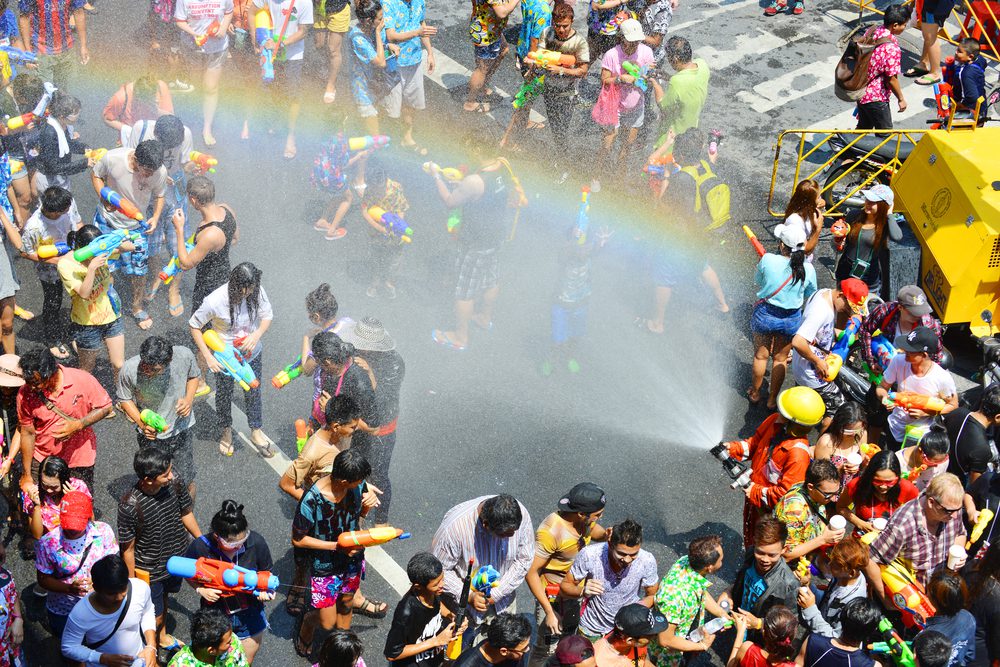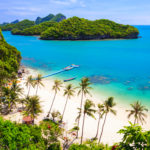This April, all of Thailand will be swept up by the whirlwind of joyous and chaotic festivities of Songkran. Marking the traditional beginning of the Thai New Year, Songkran is world-renowned for its three-day celebrations of uninhibited fun and fascinating rituals. Here, you’ll learn everything you need to know about the history, festivities, and traditions of Thailand’s largest annual festival!
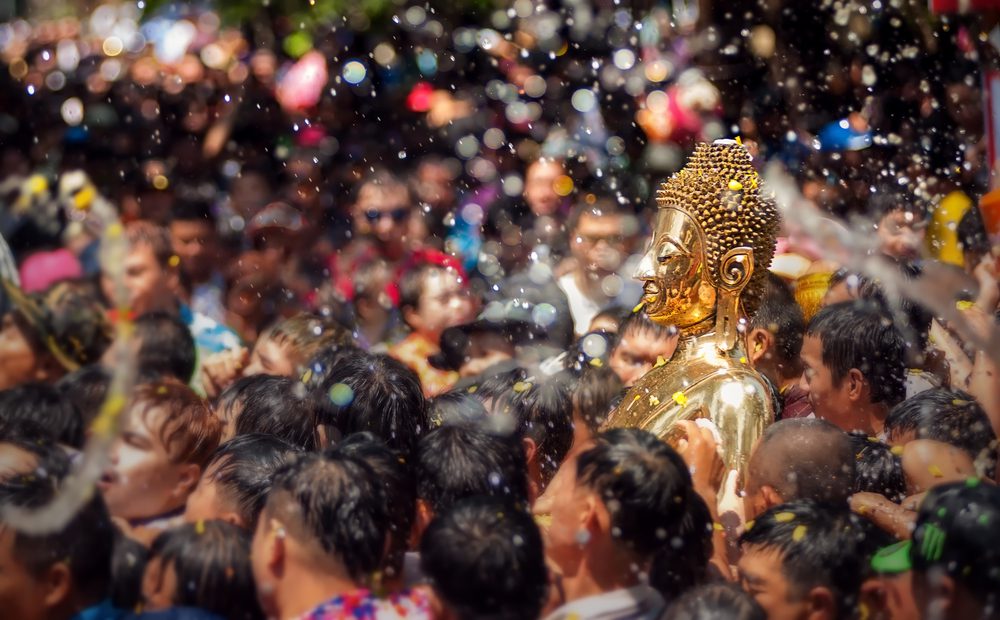
Before Thailand adopted the international New Year’s Day in 1940, Songkran was celebrated based on the beginning of a new cycle in the solar calendar- the date of which changes slightly every year. Nowadays, Songkran takes place annually on a fixed schedule, running from April 13-15. During this time, most businesses throughout the country are completely closed for a three-day national holiday.
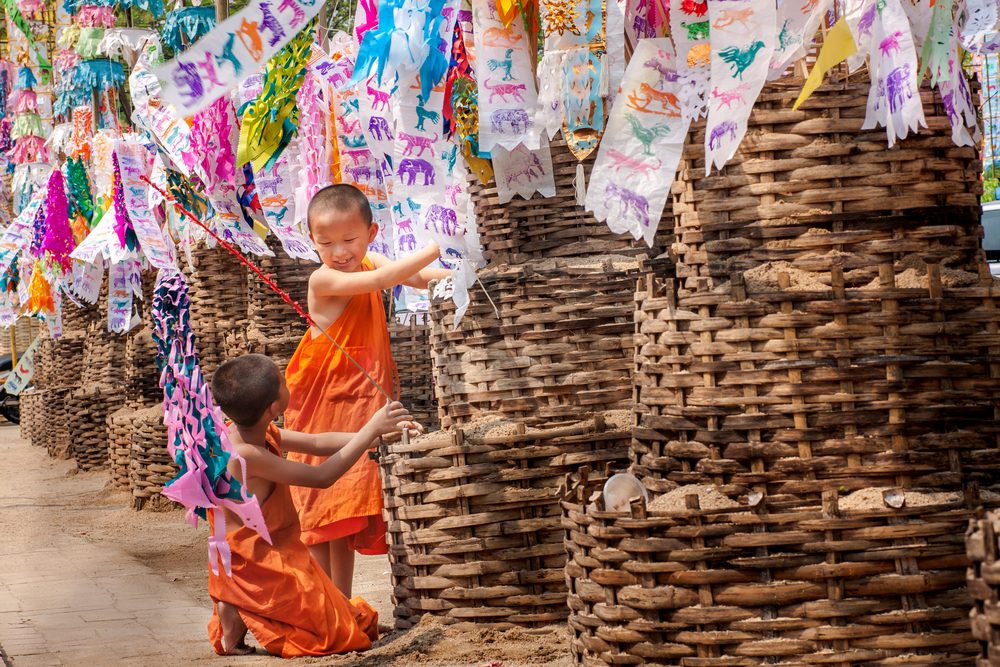
Although the focus of Songkran has shifted towards merriment and light-hearted activities, its celebrations are steeped in religious and spiritual rituals- many of which survive in different forms during the modern festivities. For the most part, Thai locals spend a portion of Songkran visiting Buddhist monasteries to pray and offer food or other gifts to Buddhist monks. In some regions of the country, people offer further reverence by constructing decorative mounds of sand inside of the temples, called “stupas.” Another heavily practiced ritual of Songkran is to thoroughly clean one’s home as the festivities approach, meant to ensure a fresh start to the New Year. Finally, long known as a festival of unity, Songkran still places much emphasis on the importance of family. Indeed, Thai individuals who have moved away from their families customarily return to their home during the celebrations to spend time with their close family and elders.
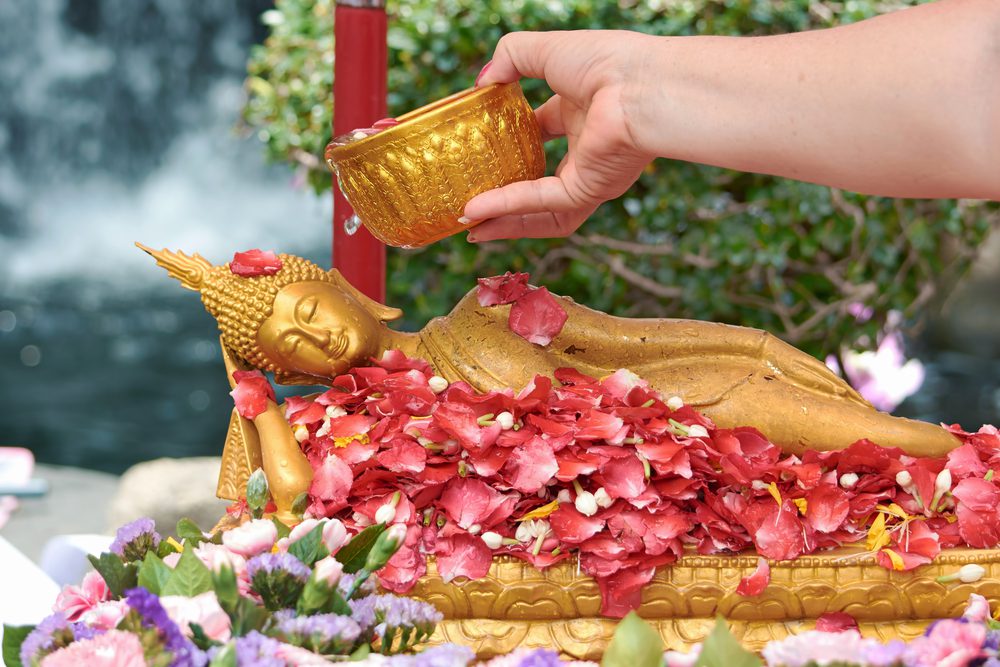
Yet, the most important of the ancient traditions of Songkran is the symbolic presence of water. In Thai culture, water is believed to purify the spirit, both cleansing the body of bad luck as well as blessing it with good fortune. During Songkran, locals would pour water over Buddha statues for cleansing purposes, then collect this water and re-use it to bless village elders and family members by sprinkling it onto their shoulders. Nowadays, however, this tradition of pouring water on others has been taken to the extreme in the form of Songkran’s world-famous water festival.
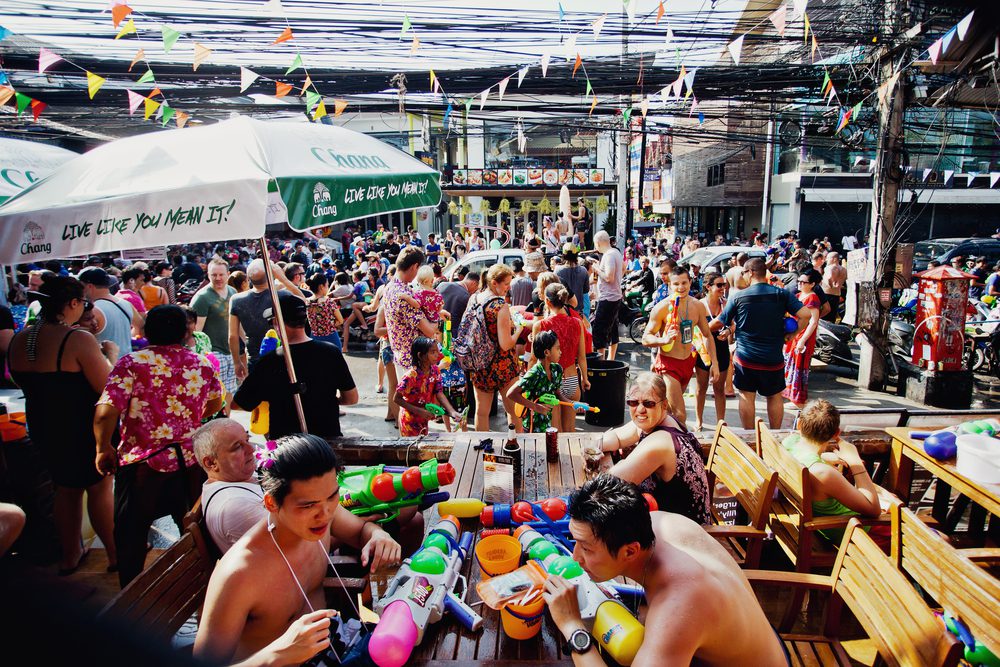 The water festival of Songkran lasts the duration of the three days, and resembles a countrywide water gun fight. Major streets in all cities are completely closed down, instead overrun by people of all ages and professions intent on splashing as much water as possible on each other. Equipped with hoses, buckets, and massive water guns, both local Thais and foreigners revel in the water-soaked streets for at least three days (in some places, the water festival can last for up to six days!) As the water fight rages on, flamboyant parades and beauty pageants are held intermittently throughout the streets, adding to the atmosphere of joviality. Clay also plays an important role in the water festival, as children and elders alike delight in smearing wet clay onto each other’s faces. This ritual resembles the blessing of objects by Buddhist monks- although the monks tend to use chalk rather than messy clay.
The water festival of Songkran lasts the duration of the three days, and resembles a countrywide water gun fight. Major streets in all cities are completely closed down, instead overrun by people of all ages and professions intent on splashing as much water as possible on each other. Equipped with hoses, buckets, and massive water guns, both local Thais and foreigners revel in the water-soaked streets for at least three days (in some places, the water festival can last for up to six days!) As the water fight rages on, flamboyant parades and beauty pageants are held intermittently throughout the streets, adding to the atmosphere of joviality. Clay also plays an important role in the water festival, as children and elders alike delight in smearing wet clay onto each other’s faces. This ritual resembles the blessing of objects by Buddhist monks- although the monks tend to use chalk rather than messy clay.
